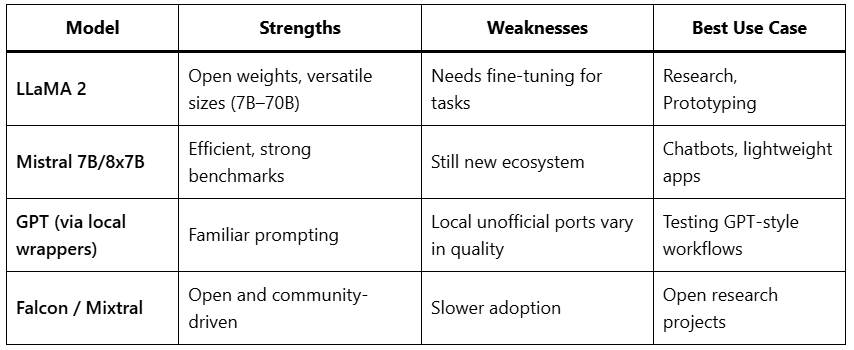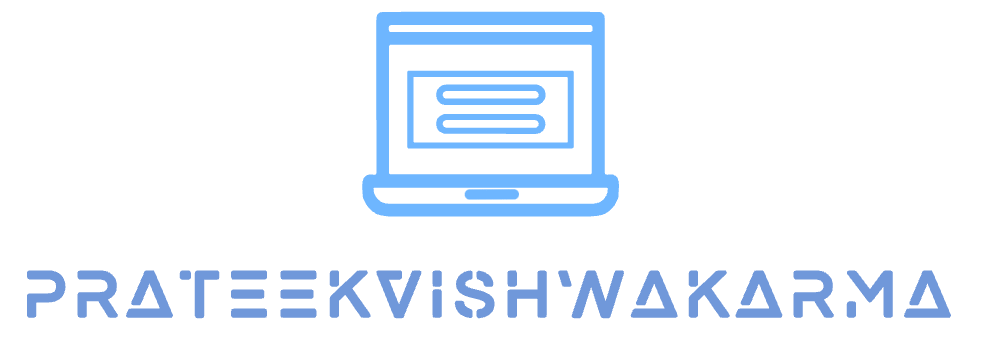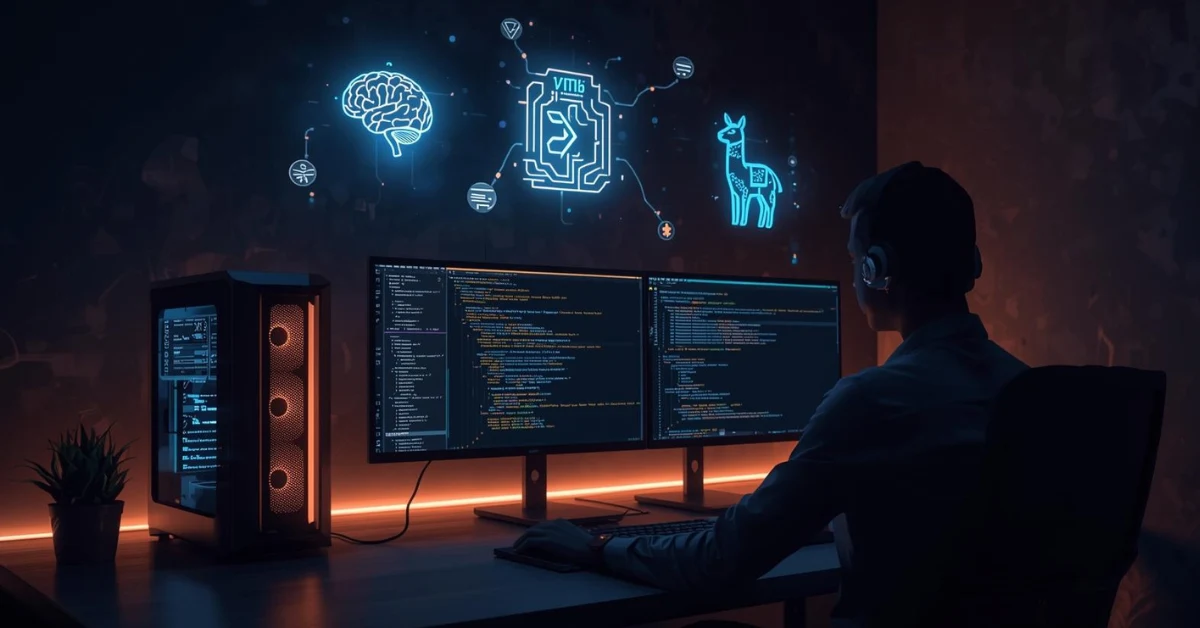Table of Contents
Run LLMs Locally in 2025: Complete Guide to LLaMA, Mistral & GPT-Style Models
Introduction
Running large language models (LLMs) locally has become one of the hottest AI trends of 2025. Developers, researchers, and even hobbyists are no longer limited to cloud APIs — thanks to innovations like LLaMA 2, Mistral, llama.cpp, and Ollama, you can run cutting-edge AI directly on your machine.
Why does this matter?
- Privacy & Security: Keep your data offline.
- Cost Control: Avoid recurring API bills.
- Customization: Fine-tune or quantize models for personal workflows.
In this guide, we’ll cover everything you need to know — from hardware requirements and installation to benchmarking and future outlook.
Why Run LLMs Locally?
- Privacy First: Local models ensure no sensitive data leaves your device.
- Offline Access: Ideal for edge devices or areas with unreliable internet.
- Faster Experimentation: No API rate limits or latency.
- Cost Efficiency: One-time GPU investment vs ongoing API fees.
Trend Insight: According to Google Trends, searches for “run LLM locally” grew over 450% in the last 12 months (Statista, 2025).
Tools & Frameworks for Running LLMs Locally
1. llama.cpp
- Lightweight C++ implementation.
- Works on CPU & GPU.
- Great for quantized models.
2. Ollama
- Easy CLI for Mac & Windows.
- One-command install of LLaMA, Mistral, and others.
- Supports embeddings & multi-model workflows.
3. LM Studio
- GUI-based tool for non-technical users.
- Supports local model downloads and inference.
4. Hugging Face Transformers + Accelerate
- Industry-standard library.
- Best for developers integrating models into applications.
Hardware Requirements for Local LLMs

Tip: Use quantization (int4/int8) to run bigger models on smaller hardware.
Cost Breakdown: Local vs Cloud

Comparing Popular Models (2025)

Statista 2025 reports that smaller, optimized models like Mistral now outperform GPT-3.5 in certain benchmarks at a fraction of the cost.
Step-by-Step Setup Guide
- Install Dependencies
brew install ollama # Macorpip install transformers accelerate - Download a Model
ollama pull llama2 - Run Inference
ollama run llama2 - Optional: Quantize for Efficiency
python quantize.py --model llama2-13b --bits 4
Benchmarks & Performance
- LLaMA 13B on RTX 3060: ~35 tokens/sec.
- Mistral 7B on Mac M2: ~22 tokens/sec.
- 70B models require at least 48–64GB VRAM.
Challenges & Limitations
- VRAM Bottleneck: Running 70B models locally requires server GPUs.
- Energy Cost: High-end GPUs consume 250–400W under load.
- Setup Complexity: Beginners may struggle with CUDA/Python dependencies.
Future Outlook (2025–2026)
- Smaller, faster models (Mixtral, Phi-2) will democratize local AI.
- Edge AI adoption will bring LLMs to smartphones and IoT devices.
- Privacy-first AI will push more businesses toward local deployment.
- Hybrid setups (local + cloud fallback) will dominate enterprise adoption.
Conclusion
Running LLMs locally in 2025 is no longer experimental — it’s practical, affordable, and empowering. Whether you’re a student, developer, or enterprise, you can now set up LLaMA, Mistral, and other GPT-style models directly on your machine, with full control over cost, privacy, and customization.
The future belongs to personal AI assistants running locally — secure, fast, and tailored to you.
FAQs
Q1: Can I run LLaMA 2 locally on CPU only?
Yes, using llama.cpp, but performance is slow (~2–5 tokens/sec). A GPU is highly recommended.
Q2: How much VRAM is needed for LLaMA 13B?
At least 12GB VRAM for smooth inference, or use quantized models for smaller GPUs.
Q3: Is it legal to run Meta’s LLaMA locally?
Yes, Meta provides open weights with licensing for research & commercial use (check official license).
Q4: Which tool is easiest for beginners?
Ollama (Mac/Windows) or LM Studio (GUI-based).
Q5: Can I fine-tune locally without huge GPUs?
Yes, using LoRA + PEFT you can fine-tune smaller models on consumer GPUs.















